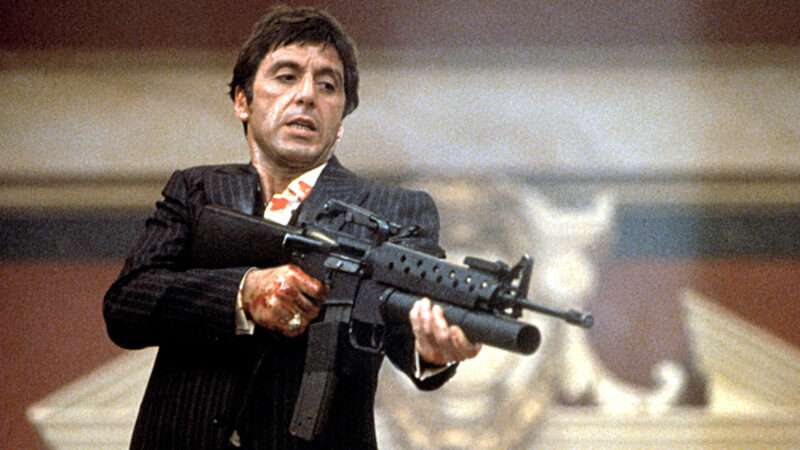
In 1983, Scarface updated the Al Capone gangster story for the modern era. Director Brian De Palma and screenwriter Oliver Stone transplanted the story to Miami and swapped out booze for blow, but prohibition still played a major role.
Tony Montana (Al Pacino) makes his way to America in the 1980 Mariel boatlift, scrounging out a living in Miami before gaining entry to the city's burgeoning cocaine trade. He achieves unfathomable success within a few short years but is ultimately undone by his own hubris and paranoia.
The film was poorly received at the time but became a cult classic. For viewers who grew up poor, the story of one man's rise from poverty to kingpin proved resonant; the film has long been a hip-hop touchstone. But Tony's status as a rags-to-riches folk hero is complicated by the violence that runs throughout his story.
Every step of the way, Tony's ascent is enabled by his proclivity for bloodshed. In the film's opening minutes, he murders a former Cuban official in exchange for a green card, and every further step up the ladder involves ruthlessly cutting down a competitor. In the end, that carnage blows back onto Tony and his loved ones. Violence is inherent to the war on drugs, not only at the hands of drug dealers fighting for their territory but at the hands of the authorities who prosecute it, leaving casualties on both sides of the law.
The post Review: <i>Scarface</i> Shows How Prohibition Leads to Violence appeared first on Reason.com.







